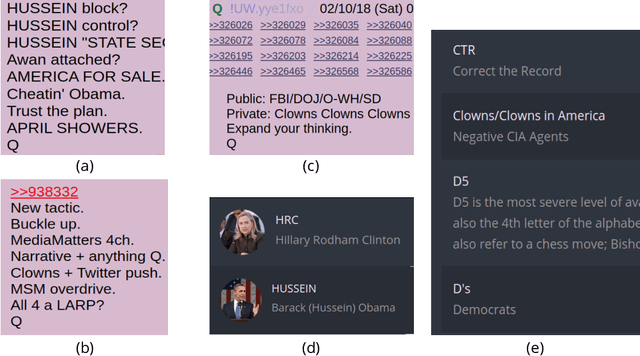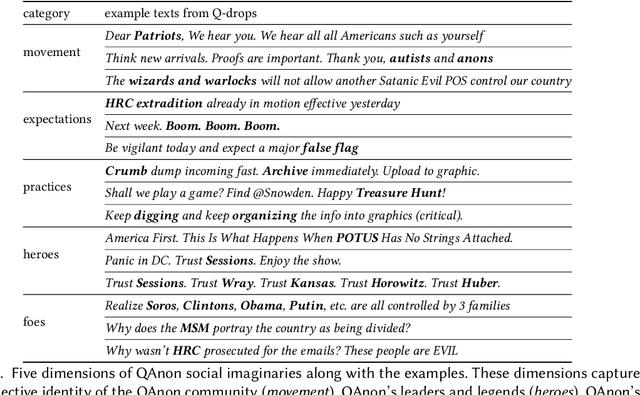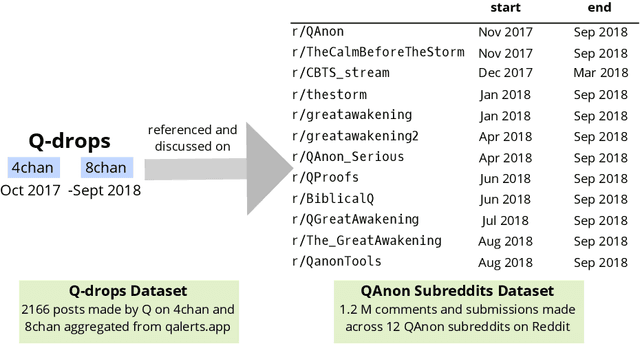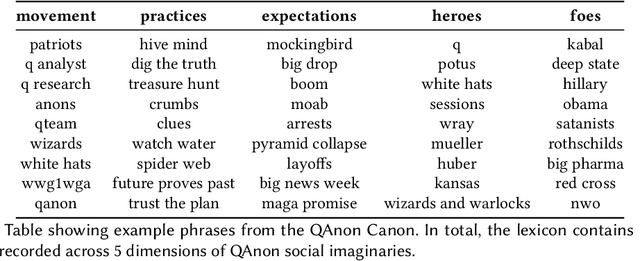Characterizing Social Imaginaries and Self-Disclosures of Dissonance in Online Conspiracy Discussion Communities
Paper and Code
Jul 21, 2021



Online discussion platforms offer a forum to strengthen and propagate belief in misinformed conspiracy theories. Yet, they also offer avenues for conspiracy theorists to express their doubts and experiences of cognitive dissonance. Such expressions of dissonance may shed light on who abandons misguided beliefs and under which circumstances. This paper characterizes self-disclosures of dissonance about QAnon, a conspiracy theory initiated by a mysterious leader Q and popularized by their followers, anons in conspiracy theory subreddits. To understand what dissonance and disbelief mean within conspiracy communities, we first characterize their social imaginaries, a broad understanding of how people collectively imagine their social existence. Focusing on 2K posts from two image boards, 4chan and 8chan, and 1.2 M comments and posts from 12 subreddits dedicated to QAnon, we adopt a mixed methods approach to uncover the symbolic language representing the movement, expectations, practices, heroes and foes of the QAnon community. We use these social imaginaries to create a computational framework for distinguishing belief and dissonance from general discussion about QAnon. Further, analyzing user engagement with QAnon conspiracy subreddits, we find that self-disclosures of dissonance correlate with a significant decrease in user contributions and ultimately with their departure from the community. We contribute a computational framework for identifying dissonance self-disclosures and measuring the changes in user engagement surrounding dissonance. Our work can provide insights into designing dissonance-based interventions that can potentially dissuade conspiracists from online conspiracy discussion communities.
 Add to Chrome
Add to Chrome Add to Firefox
Add to Firefox Add to Edge
Add to Edge